
When I started the series, Killing Big Mule Deer, last year, I thought hard and long about what defines a big mule deer. Because older experienced bucks are hard to find and kill, the term “big” should take in more than antler size. Antler size varies according to where in the West a buck lives and his genetics. However, I find that killing a big mule deer anywhere on public land (or private in many cases) is difficult regardless if he resides in a country known for giant deer—like Colorado’s Mesa County—or a county that hardly shows up in the record books—like Idaho’s Custer Country.
Here is my definition of what makes up a “big” mule deer:
Age
I list age first because without it, it is very difficult for any buck to become big. Because I’ve lab-aged nearly all of my big bucks (over 20), and those of many other hunters, I have a good barometer of how old big bucks are. I’ve found that big mule deer are four years or older. There are cases of a few Boone & Crockett bucks in the books that were three years old, but they are extremely rare. For a buck to get big, he needs to be at least four.
Body Size
While this can vary according to latitude and habitat, virtually all of the bucks I’ve aged that are at least four have big bodies. They will be big enough that you will notice their size almost immediately, often before their antlers. They’ll be longer, taller, and just plain bigger than other deer in that herd. I’ve even weighed several of my bucks on good scales. Dressed, they range between 200 and 285 pounds, which figures out to be around 260 to 350 pounds on the hoof.
Antler Diameter (heaviness)
While I love the record books, there are other “inches” that constitute a big mule deer. The pedicles from which the antlers grow typically gain diameter as the buck ages. If you kill a buck with 5” to 6” antler bases, you’ve very likely killed a buck older than four. There is something commanding about a heavy-antlered buck that spread, height, and score just can’t make up for.
Antler Width
If you understand the record books, you’ll see the most widely accepted scoring systems don’t consider outside width in the final score. I understand that and don’t challenge it. However, most of us DIY hunters can’t be so picky. Often, when you see a big buck the first thing that catches your eye is width. Not all big bucks are wide, but wide bucks are big!
Score
I saved this one for last as I think it is less relevant than in past decades. Bucks that make Boone & Crockett’s All-Time list are very very rare. How rare? I’ve spent 37 years in some of the best Boone & Crockett mule deer country in Idaho, Colorado, Wyoming, Utah, and Nevada, yet I’ve only seen about four or five typicals that would make the all-time list and zero, yes zero, non-typicals. It’s because of this rarity, that I don’t list score first. If I did, you may not appreciate the fact that there are many “big” mule deer that won’t make the book. However, I still use score in my definition of big. I think any buck that is at least 180” gross Boone & Crockett is big. Most hunters who see a buck like that on the hoof will hands-down agree with me and will only pass him up if they’ve seen a bigger one in the area or have a very special draw tag.
Spend a few decades and a thousand days in mule deer country then let me know if you agree or disagree with my definition. Unless you’re very wealthy and can hunt the best of the West regularly, I think you will.
Don’t forget to “Subscribe to blog” upper right under Fitness/Other links so you don’t miss a post.
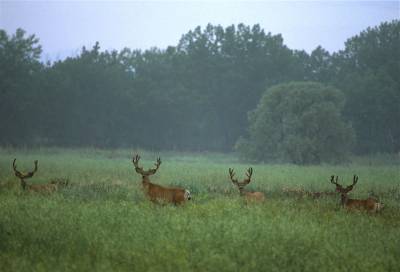

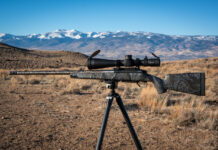


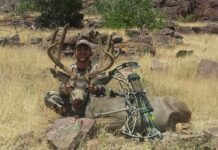


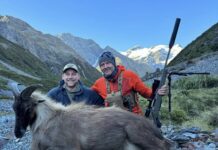
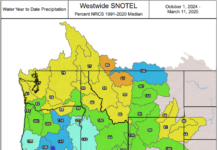





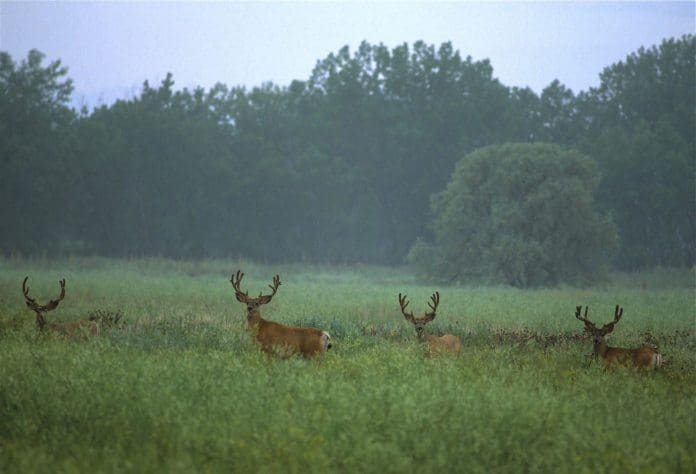
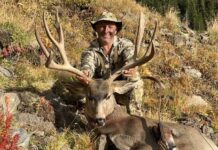





Another great perspective on big mule deer. I agree, for the most part. The only two items that I would switch around is width and score. I would rather take a buck with deep forks and mass that outscores a wider buck with shallow forks. As long as you are writing on the topic of big mule deer, I will continue reading.
thanks Justin and you bring up a good point. The definitions listed are my [i]personal[/i] likes and sometimes the order changes depending on where I’m hunting. The reason I list width the way I do is that I see very few wide bucks so they’re a little more special to me when I see one but yes, a wide buck with shallow forks next to heavy deep forked buck is probably safe from me.
Thanks again for the article Robby as always great information.
Thanks again for the article Robby as always great information.
Comments are closed.